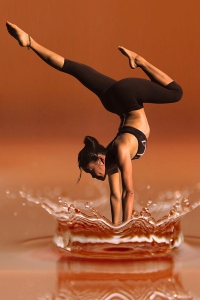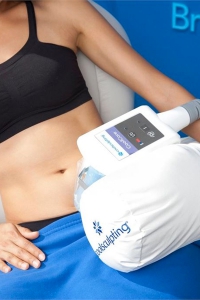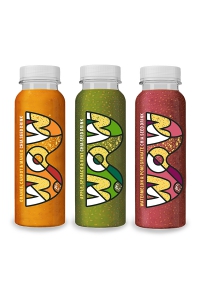A new research report, 'Loving Our Bodies Inside Out', looks at why it is important to support our muscles and joints during all life stages and why we all need to listen to our bodies. We can do a lot more to feel fit, healthy and fabulous from the inside out.
Injury, illness, and genetics all impact our muscle and joint health. However, the past 18 months of reduced opportunities to exercise, working or studying from home, and additional lockdown weight have taken their toll, too. Inactivity is an important factor as the physiotherapist Sammy Margo warns: “The dangers of sedentary lifestyles are not simply due to reduced calorie burning; habitual inactivity leads to a slew of health issues known collectively as hypokinetic diseases.”
Research for Mentholatum, the brains behind the Deep Heat and Deep Freeze, the go-to thermotherapy and cooling topical solutions our bodies need to help keep us active, found that:
• more than 6 in 10 adults reported muscular troubles;
• 50% struggled with joint stiffness;
• only 45% manage a daily walk, and;
• 1 in 5 sit for hours without getting up and stretching to ease muscle fatigue.
But the good news is that it is never too late to take control. That is why Deep Heat has recruited a team of experts with hands-on experience – physiotherapist and sleep specialist Sammy Margo; dietitian Dr Carrie Ruxton; women’s health expert Dr Catherine Hood; and personal trainer Chris Ruxton – to review the research and provide evidence-based support on the best ways to build and maintain musculoskeletal strength and resilience.
The experts' roadmap to muscle and joint wellbeing signposts the key times in our lives that can be turning points on the path to an active and pain-free life. They suggest strategies, self-care solutions, diet and lifestyle tips to help to keep us all moving – despite the times, and irrespective of our time of life.
The Study Years: Teens And Early 20s
The latest research for Deep Heat revealed that two out of five (40%) of 18 to 29-year-olds have reported an increase in back problems over the previous year. While 47% of 18- to-29-year-olds have to rest due to lower leg, ankle, or foot pain.
University of Bath researchers found that 12% of adolescents experience a severe episode of pain. One in five adults living with pain experienced untreated pain in adolescence.
Common triggers for muscle problems at this age are:
• Participation in jogging or football that can lead to pulled hamstrings or tight calves.
• Hunching over a smartphone, tablet, or laptop screen, causing shoulder and neck issues.
• Carpal Tunnel Syndrome from studying at a laptop or spending too long texting.
Personal Trainer Chris Ruxton advises: “Head off study pain and discomfort by keeping flexible and avoiding poor posture." Chris recommends the cat-cow stretch, especially after desk work.
Try The Cat-cow Stretch, A Classic Yoga Pose
"On your hands and knees, gently arch your back by dropping your hips and allowing your belly to relax. Remember to pull your shoulders back. After holding and breathing for a few seconds, now reverse and arch your back like a cat by tucking in your tailbone and drawing your belly up with your head relaxed forward. Breathe and repeat 8-10 times."
Deep thinking: many parents are, understandably, cautious about giving medication to teens and young people experiencing muscular discomfort — so drug-free products such as Deep Heat Pain Relief Patches can help ease aches and pains. To cool tired legs and feet after a day’s play on the pitch or track and field training, products like Deep Freeze Glide-On Gel offer soothing relief.
The Juggling Years: The 20s, 30s And 40s
A third (35%) of 30- to 40-year-olds who took part in the Deep Heat research poll reported an increase in back problems over the previous year. A third (35%) of 35- to 44-year-olds have had lower back pain. And 10% have struggled with shoulder or upper back pain.
It is hardly surprising when 50% of people working from home use a laptop sitting on a sofa or armchair and 33% work in bed. Three-quarters of 30- to 44-year-olds know the warning signs that their body is telling them to slow down or give it some TLC – but if they were in pain or discomfort, 55% would not miss a work meeting and 46% would not cancel a social engagement.
Common triggers for muscle problems at this age are:
• Sleeping positions that are not supportive enough e.g. saggy mattresses and old limp pillows, leading to back and neck aches. Back problems due to ergonomically unsound home working environments.
• Back, neck, foot, ankle, and calf issues caused by driving with a bad posture for hours without breaks to stretch.
• Prolonged stress can trap us in a cycle of cortisol production (a stress hormone), chronic inflammation, and pain.
Sammy suggests: “Using topical treatments at home can provide a quick solution to discomfort. For example, Deep Heat Pain Relief Heat Patch is a convenient drug-free adhesive patch that can be worn comfortably under work clothes to relieve aches, while Deep Heat Max Strength combines soothing heat with pain-killing ingredient, methyl salicylate.”
Women’s health expert, Dr Catherine Hood adds: “Our mental health is just as important as our physical health – and, in fact, the two are interconnected because unhappiness, stress and depression can change our posture and have a negative impact on our muscular health.”
Chris advises: “Lower back pain is often a sign that your sitting position needs realignment so make sure you’re not slumping when using a laptop and computer or watching TV.” The cat-cow stretches mentioned above are an effective yoga exercise to find relief from lower back pain and keep active.
Midlife
Losing 0.5 to 2% of muscle mass a year is a normal part of ageing from the 40s and 50s. Obesity is an added risk factor as an increase in body weight can put extra pressure on joints. Muscle weakness in older people costs the UK around £2.5 billion annually in extra healthcare.
The Deep Heat research found that 47% of adults aged 60 and over have to rest due to lower leg, ankle or foot pain. In addition to this, more than a quarter (26%) have experienced muscle strain or sprain.
Common causes of muscle and joint pain at this age are:
• Wear and tear as part of the normal ageing process.
• Weight gain and obesity putting extra pressure on the joints.
• Lack of muscle-strengthening exercises to support the skeleton.
• The effects of other life stages catching up if you have not taken care of your musculoskeletal health during early adulthood.
Chris says: “Everyone can benefit from resistance or strength exercises, regardless of age or fitness. Strength work, which is simple to learn from a Personal Trainer or in a CrossFit class, helps to maintain muscle health and core stability which are the foundations of good posture. Basically, when it comes to muscle tone, you can use it or lose it.”






